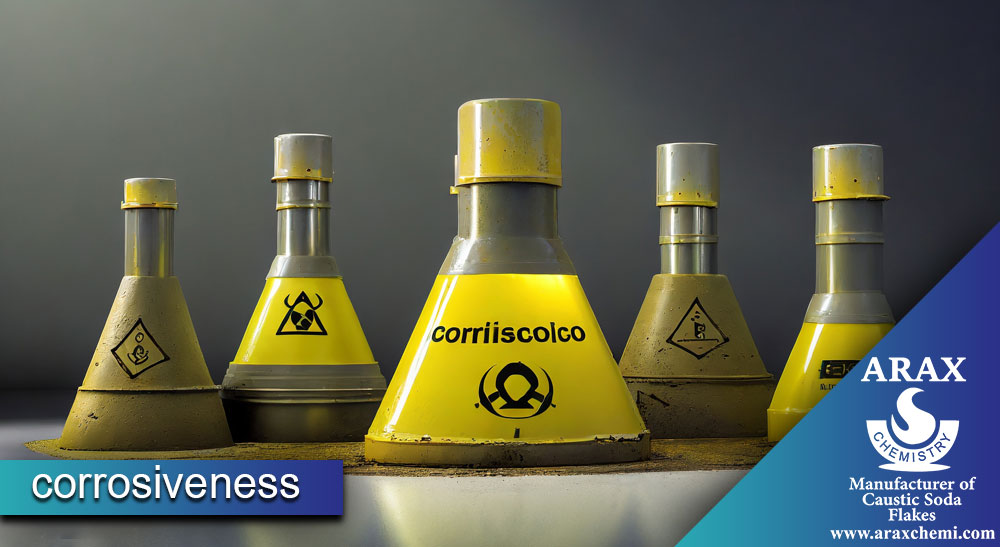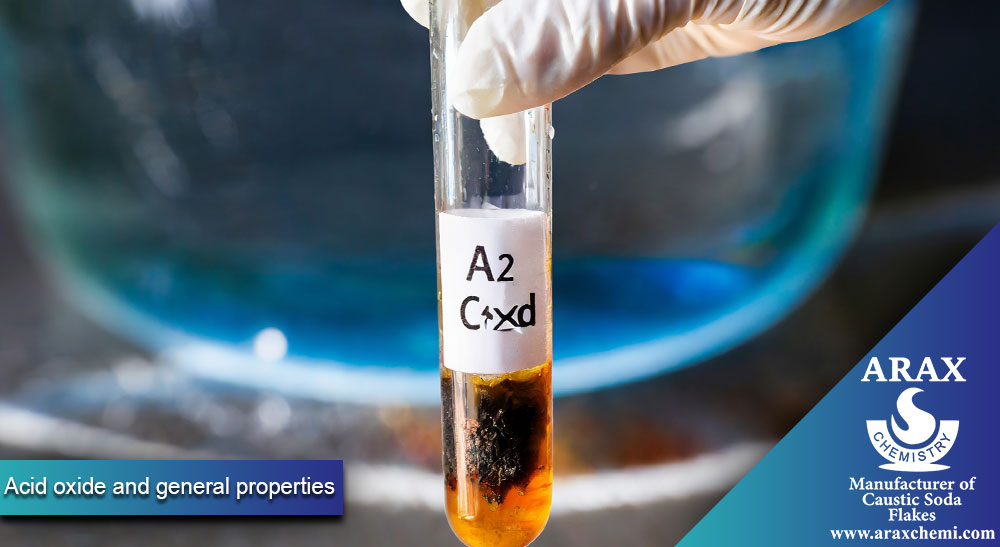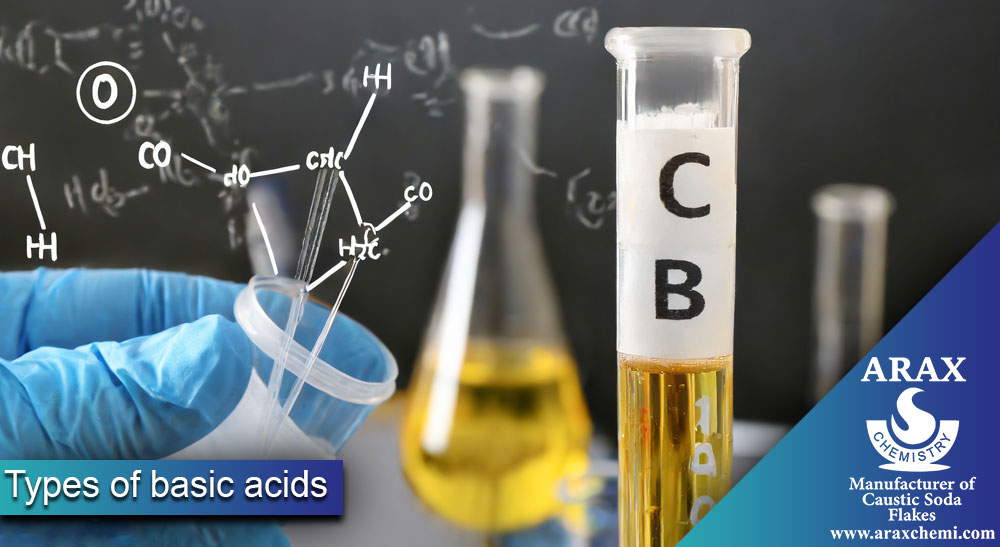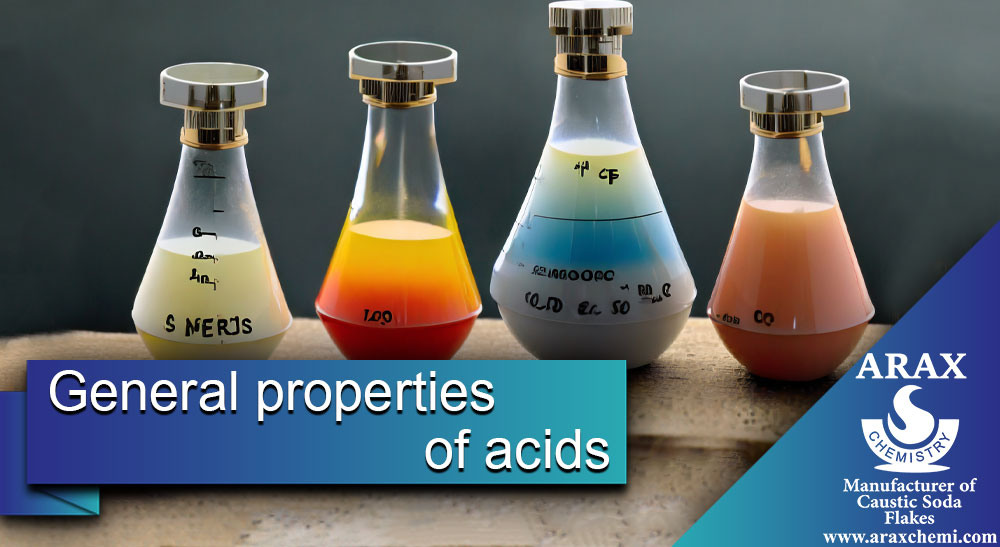Acids are known as one of the most important sets of chemical compounds in the world. Acid have wide applications in various industries, laboratories and chemical and biological processes. In this article, we review the important properties of acids, including antibacterial, solubilizing, antioxidant, catalytic, gas-generating, scavenging, and decolorizing properties. The purpose of this article is to provide an overview of the characteristics and General properties of acids along with their applications in various industries and the important role they play in chemical and biological processes. This article not only helps readers to learn about the wide range of properties of acids, but also examines the role of acids in scientific research and technological advancements.
What is an acid?
Acids are chemical compounds that produce hydrogen ions (H+) in the presence of water or aqueous environments. These compounds are known as sour compounds. Acids usually do not exist in their pure form as liquid or gas, but are found as aqueous solutions or in combination with other substances. When an acid combines with water, a hydrogen atom (H) is released and dissolves in water as hydrogen ions (H+). These hydrogen ions cause sourness and acidic properties. Acids have various chemical properties. Some of the properties of acids are:
pH balance: Acids are able to lower the pH of solutions and drive them to a value less than 7.
Interaction with bases: Acids react with bases and can form new compounds.
Solubility: Many acids dissolve well in water and form acidic solutions.
Corrosivity: Some acids are able to gradually corrode materials, especially metals.
Examples of acids include sulfuric acid (H2SO4), nitric acid (HNO3), and hydrochloric acid (HCl).

It is important to know that the use of acids should be done with caution and compliance with safety instructions, because some acids can cause risks such as skin and eye irritation, burns and explosions.
Arrhenius theory about acids and general properties of acids
The Arrhenius theory is one of the most important theories in chemistry, which was presented in the 19th century by a Swede named Sefrias Arrhenius. This theory is about the chemical reactions of acids and bases and explains how acids and bases behave in their reactions.
According to the Arrhenius theory, an acid is described as a substance that produces hydrogen ions (H⁺) in chemical reactions. In other words, acids in water release H⁺ ions. For example, in the reaction of hydrochloric acid (HCl) with water, H⁺ and Cl⁻ ions are produced:
HCl + H₂O → H⁺ + Cl⁻
Bases are described as substances that produce hydroxide ions (OH⁻) in chemical reactions. Bases can be defined on the same basis as compounds that are able to accept H⁺ ions. For example, in the basic reaction of sodium hydroxide (NaOH) with water, Na⁺ and OH⁻ ions are produced:
NaOH + H₂O → Na⁺ + OH⁻
In this theory, the reaction between an acid and a base is known as an acid-base reaction. In this reaction, the H⁺ ion is transferred from the acid to the base, and as a result, an aqueous compound is formed. for example:
HCl + NaOH → NaCl + H₂O
In this reaction, the H⁺ ion is transferred from hydrochloric acid to sodium hydroxide base and an aqueous compound is produced, while sodium chloride salt (NaCl) is also formed.
Arrhenius theory, as one of the basic theories of chemistry, plays an important role in understanding and explaining acid-base reactions in chemical systems and is also very useful in understanding and explaining the general properties of acids.
Acidic oxides and general properties of acids

Acidic oxides are compounds that react with water to produce hydrogen ions (H⁺). These compounds are often found in gas or solid form and in some cases in water soluble form. Acidic oxides usually include salt-generated oxides.
For example, carbon dioxide (CO₂) is an acidic oxide. In the reaction with water, CO₂ is separated as follows:
CO₂ + H₂O → H₂CO₃
In this reaction, CO₂ interacts with water and carbonic acid (H₂CO₃) is formed, which releases H⁺ ions. This H⁺ ion refers to the acidic property of this compound.
What are the general properties of acids?
Acids are chemical compounds that release hydrogen ions (H⁺) in the presence of water. This hydrogen ion interacts with water and forms hydronium ion (H3O⁺). The general properties of acids are:
- Acids act through interaction with bases or other compounds with oxidizing behavior. They can take electrons from other compounds and modify themselves as a compound.
- Acids are usually solvents and bleaches. They can react with compounds such as metals, skin, organic tissues, coatings and other materials.
- Acids can accelerate chemical reactions. They can act as catalysts and speed up chemical reactions.
- Many acids have neutralizing properties. By combining bases, they can be strong neutralizers and change the pH of the solution. Strong acids can reverse the pH from alkaline to acidic.
- Acids can be corrosive. They can crack solid surfaces and react with stagnant and organic compounds.
The most important properties of acids are that they react with alkaline compounds and bases and can be used in a large number of chemical processes and industrial and laboratory applications.
Types of basic acids

Basic acids are known as compounds that transfer electrons to bases or other compounds. Below, I will name some examples of basic acids for you:
- Ammonia (NH3)
- Sodium hydroxide (NaOH)
- Potassium hydroxide (KOH)
- Calcium hydroxide (Ca(OH)2)
- Magnesium hydroxide (Mg(OH)2)
- Aluminum hydroxide (Al(OH)3)
- Sodium carbonate (Na2CO3)
- Potassium carbonate (K2CO3)
- Sodium bicarbonate (NaHCO3)
- Ammonium bicarbonate (NH4HCO3)
- Sodium phosphate (Na3PO4)
- Potassium phosphate (K3PO4)
- Sodium sulfide (Na2S)
- Ammonium sulfide (NH4)2S)
- Calcium sulfide (CaS)
Ammonia (NH3)
Ammonia (NH3) is a colorless and odorless gaseous compound. It is also found in aqueous form known as aqueous ammonia (NH4OH). Ammonia is commonly used in the chemical industry, fertilizers, plastics industry, and household products such as laundry detergents and cleaners. This compound is neutral and acts as a weak base. Also, ammonia is flammable and has a pungent odor that can be irritating. Therefore, you should be careful when using it and avoid direct contact with the skin and long-term breathing.
sodium hydroxide (NaOH)
Sodium hydroxide (NaOH) is a strong alkali commonly known as lye. This compound is available as a colorless and odorless solid and dissolves well in water. Sodium hydroxide is used in various industries, including soap production, detergent products, petroleum refining industries, paper and cellulose production, electrolysis industries, water purification, and preparation of standard solutions in laboratories. This strong alkali can neutralize acids and increase the pH of the solution. Also, it should be noted that sodium hydroxide has risks such as damage to the skin and eyes, so direct contact with it should be avoided.
potassium hydroxide (KOH)
Potassium hydroxide (KOH) is a strong alkali that dissolves in water and is available as a crystalline and colorless solid. This compound is used in various industries, including soap production, cosmetic products, paper and cellulose production, chemical extraction, battery production, dyes and pigments, agriculture and fertilizers, and the electronics and pharmaceutical industries. Also, potassium hydroxide can be used to adjust the pH of solutions and supply potassium to plants in agriculture. But it should be noted that potassium hydroxide has risks such as damage to the skin, eyes and breathing, so direct contact with it should be avoided.
Calcium hydroxide (Ca(OH)2)
Calcium hydroxide (Ca(OH)2) is a chemical compound that is available as a white and colorless powder. This compound is slightly soluble in water and forms an alkaline solution called calcium water. Calcium hydroxide is used in various industries, including construction, water treatment, agriculture, food processing, and industrial refining. But it should be noted that calcium hydroxide has risks such as skin and eye irritation, so be careful when using it and avoid direct contact with skin and eyes.
Magnesium hydroxide (Mg(OH)2)
Magnesium hydroxide (Mg(OH)2) is a chemical compound that is available as a white and colorless powder. This compound is slightly soluble in water and forms an alkaline solution called magnesium water. The properties and uses of magnesium hydroxide include alkalizing, antacid, pH regulator, fire retardant and applications in pharmaceuticals. Magnesium hydroxide is used internally as a mineral supplement and in medicines. Before using supplements containing magnesium hydroxide or taking related drugs, it is better to consult a doctor or specialist.
Aluminum hydroxide (Al(OH)3)
Aluminum hydroxide (Al(OH)3) is a chemical compound that is available as a white and colorless powder. This compound has alkalizing, anti-acidic, pH regulating, anti-fire properties and applications in pharmaceuticals. Aluminum hydroxide is used as a mineral supplement and pH regulator in medicines. Before using supplements containing aluminum hydroxide or taking related drugs, it is better to consult a doctor or specialist.
sodium carbonate (Na2CO3)
Sodium carbonate (Na2CO3) is a chemical compound known as a strong alkali. This combination is used in various industries such as glass production, soap, detergents, water treatment, chemical and food industries. Also, it can be used in pH adjustment and flour boiling. However, it should be used with caution and follow safety guidelines.
Potassium carbonate (K2CO3)
Potassium carbonate (K2CO3) is a chemical compound that is found as a white and crystalline powder. This compound has alkaline properties and is used in various industries such as glass industry, soap making, water treatment and agriculture. It should be used with caution and follow safety instructions.
sodium bicarbonate (NaHCO3)
Sodium bicarbonate (NaHCO3) is a chemical compound that is found as a white powder. This compound has alkaline properties and can be used in cooking, relieving heartburn, cleaning and disinfecting, pH adjustment, and personal hygiene. In any case, it is recommended to follow the relevant instructions and guidelines and consult a doctor if needed.
Ammonium bicarbonate (NH4HCO3)
Ammonium bicarbonate (NH4HCO3) is a chemical compound that is available as a white powder. This compound has alkaline properties and is used in food, sugar, metals, hydroponic agriculture and detergent and disinfectant products. However, ammonium bicarbonate is a biodegradable compound and may decompose under certain moisture conditions. It is better to follow the relevant instructions and safety guidelines and, if necessary, consult a doctor or specialist.
Sodium phosphate (Na3PO4)
Sodium phosphate (Na3PO4) is a chemical compound that is available as a white powder. This combination is used in food, chemical, water and sewage and textile industries.
Potassium phosphate (K3PO4)
Potassium phosphate (K3PO4) is a chemical compound that has many uses in different industries. This compound is used as a source of potassium and phosphorus in the food, agricultural, chemical and electronic industries.
sodium sulfide (Na2S)
Sodium sulfide (Na2S) is a chemical compound that is used in various industries. This compound is used as an important chemical in mineral extraction processes, leather industry, paper production and chemical industry.
Ammonium sulfide (NH4)2S)
Ammonium sulfide (NH4)2S) is a chemical compound that is used in various industries. Its main applications include use in the textile industry as a color enhancer, in the production of paper as a dye, in the production of fertilizers as a source of ammonium and sulfur, and in the production of various chemicals.
calcium sulfide (CaS)
Calcium sulfide (CaS) is a chemical compound that is used in various industries. Its main applications include use in steelmaking, water treatment, paper industry and chemical production. These are just a few examples of basic acids, and there are many more in chemical practice. Also, metal compounds such as alkalis are also considered as basic acids because they donate electrons.
Types of alkaline acids

Alkaline acids are compounds that release hydroxide ions (OH⁻) in the presence of water. Below, I will name some examples of alkaline acids for you:
- Barium hydroxide (Ba(OH)2)
- Strontium hydroxide (Sr(OH)2)
- Lithium hydroxide (LiOH)
- Rubidium hydroxide (RbOH)
Barium hydroxide (Ba(OH)2)
Barium hydroxide (Ba(OH)2) is a chemical compound available as a white crystalline solid. This compound is known as a strong alkali and separates in water as barium (Ba2+) and hydroxide (OH-) ions. The main applications of barium hydroxide include use in glass industry, textile industry, painting industry, and laboratories. But it should be noted that barium hydroxide is a strong chemical compound and should be used with caution.
Strontium hydroxide (Sr(OH)2)
Strontium hydroxide (Sr(OH)2) is a chemical compound available as a white crystalline solid. This compound is known as a strong alkali and separates in water as strontium (Sr2+) and hydroxide (OH-) ions. The main applications of strontium hydroxide include use in glass industry, textile industry, painting industry and laboratories. It should be noted that strontium hydroxide is a strong chemical compound and should be used with caution.
Lithium hydroxide (LiOH)

Lithium hydroxide (LiOH) is a chemical compound available as a white crystalline solid. This compound is known as a strong alkali and separates in water as lithium ions (Li+) and hydroxide (OH-). The main applications of lithium hydroxide include use in the battery industry, chemical industry and laboratories. But it is necessary to be careful and pay attention to the instructions and safety guidelines when using lithium hydroxide.
rubidium hydroxide (RbOH)
Rubidium hydroxide (RbOH) is a chemical compound that contains a rubidium atom (Rb) and a hydroxide group (OH-). This compound is available as a white crystalline solid or dark brown crystals. Because rubidium hydroxide is commonly used in laboratory operations and scientific research, it has limited uses and should be used with caution and following safety guidelines.
These are just a few examples of alkaline acids, and there are many more in chemical action. Alkaline acids are commonly known as strong bases and have a strong ability to make solutions alkaline and raise the pH.
The strongest acids
The molecules of these acids are completely ionized in dilute aqueous solutions.
Conventional strong acids are: hydrochloric acid, iodideric acid, nitric acid, sulfuric acid, perchloric acid.
The most important weak acids
The ionization of these acids in water is not complete and never reaches 100%.
Their conventional examples are acetic acid, carbonic acid, hydrofluoric acid, nitro acid and to some extent phosphoric acid.
sulfuric acid
One of the strong mineral acids with the formula H2SO4 is an oily and colorless liquid.
It is a useful commodity of industry, from which it is widely used in oil refining and in production factories
Fertilizers, dyes, pigments, dyes and explosives are used.
acetic acid
An organic acid in the form of a pungent and colorless liquid with the formula CH3COOH, which is also the basis of vinegar pickling. Most of the acetic acid produced in the world is used to react with alcohols to produce esters
which are used as the best solvents in paint and polish. Acetic acid is also used in pharmaceutical factories, processing natural rubber and preparing artificial leather, and as a solvent for many organic compounds.
nitric acid
It is a strong mineral acid with the formula HNO3, which is used in factories producing ammonium nitrate and phosphate fertilizers, nitro explosives, plastics, dyes and varnishes.
Sulphonic acid
These acids with the general formula HSO3R, where R can be methane or benzene, etc., are soluble in water, non-volatile and moisture absorbent and are used as emulsifying agents, additives and lubricating oils and to prevent corrosion and rust.
Hydrochloric acid
One of the strong mineral acids with the formula H Cl, which is a colorless or slightly yellowish liquid, very corrosive and non-flammable. This acid dissolves in water, alcohol, benzene and is used in acidifying (activating) oil wells, cleaning boiler deposits , food industry, metal cleaning, etc. are used.
hydrides
Some double covalent hydrogen containing compounds such as (HCl, H2) are acidic.
Two factors affect the hydridic acid strength of the element:
Electronegativity of the element and atomic size of the element
The acid strength of the hydrides of the elements of a period increases from left to right and in line with the electronegativity of the elements.
An electronegative element takes more electrons from hydrogen and accelerates its release as a proton. The acid strength of the hydrides of the elements of a group increases with the increase in the size of the central atom.
In the second period: NH3>H2O>HF in group VI is as follows:
H2Te > H2Se > H2S > H2O
last word
Acids are chemical compounds that produce hydrogen ions (H+) in the presence of water or aqueous environments and are known as sour compounds. They are used in chemical industries, laboratories and chemical processes. Examples of acids are sulfuric acid, nitric acid, and hydrochloric acid. The main uses of acids include industrial production, water treatment, animal and poultry feed industry, laboratory use and battery production. Any use of acids should be done with caution and following safety instructions, because acids can cause risks such as skin and eye irritation, burns and explosions.
ARAX CHEMISTRY is a great manufacturer of Caustic Soda Flakes and which offers its High-quality products.

